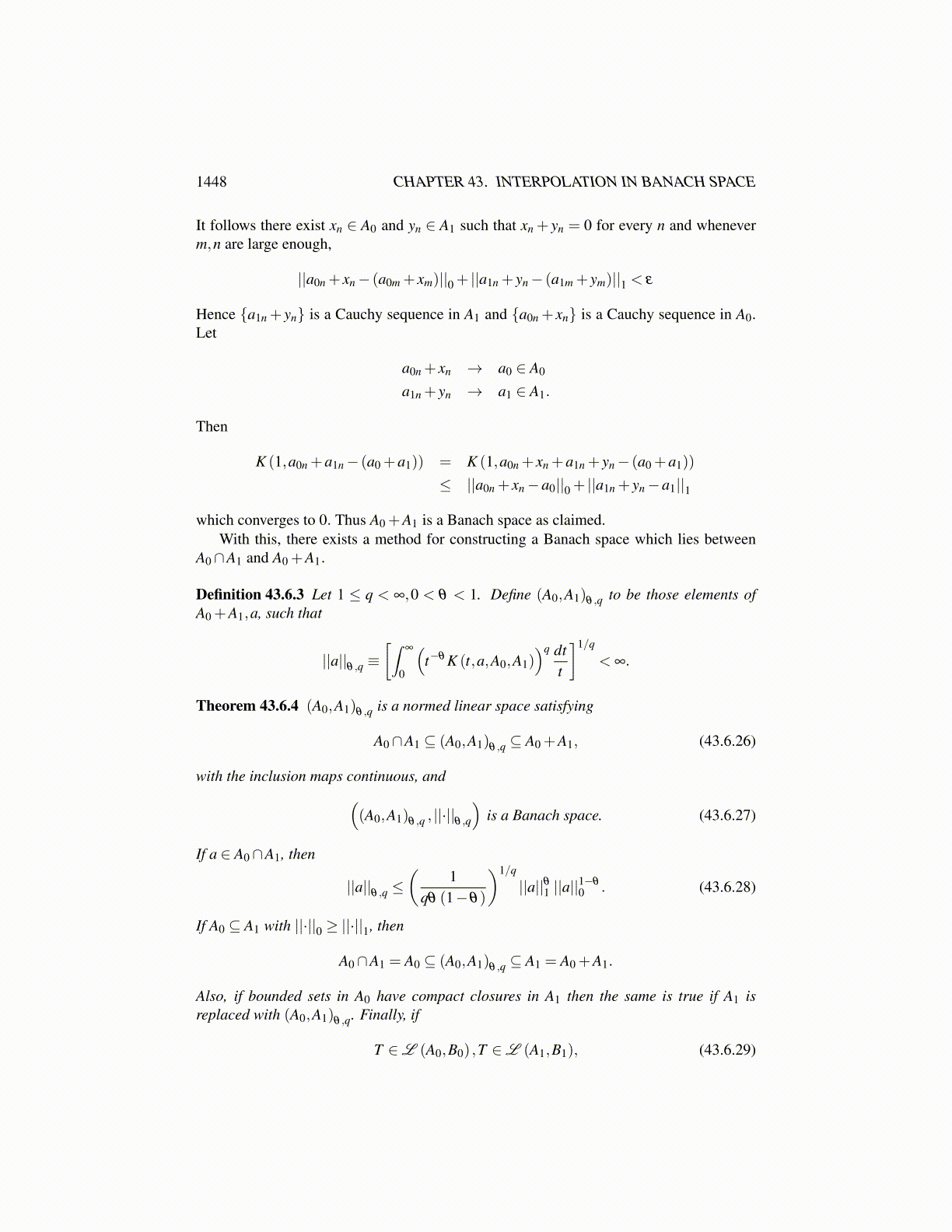
1448 CHAPTER 43. INTERPOLATION IN BANACH SPACE
Therefore, the {uni } are all bounded. It follows that after taking subsequences k times there
exists a subsequence{
unk
}such that unk is a Cauchy sequence in Lp (a,b;W ) . You simply
get a subsequence such that unki is a Cauchy sequence in W for each i. Then denoting this
subsequence by n,
||un−um||Lp(a,b;W ) ≤ ||un−un||Lp(a,b;W )
+ ||un−um||Lp(a,b;W )+ ||um−um||Lp(a,b;W )
≤ η
4+ ||un−um||Lp(a,b;W )+
η
4< η
provided m,n are large enough, contradicting 43.5.24. This proves the theorem.
43.6 The K MethodThis considers the problem of interpolating Banach spaces. The idea is to build a Banachspace between two others in a systematic way, thus constructing a new Banach space fromold ones. The first method of defining intermediate Banach spaces is called the K method.For more on this topic as well as the other topics on interpolation see [16] which is what Iam following. See also [124]. There is far more on these subjects in these books than whatI am presenting here! My goal is to present only enough to give an introduction to the topicand to use it in presenting more theory of Sobolev spaces.
In what follows a topological vector space is a vector space in which vector addition andscalar multiplication are continuous. That is · :F×X→X is continuous and + : X×X→Xis also continuous.
A common example of a topological vector space is the dual space, X ′ of a Banachspace, X with the weak ∗ topology. For S⊆ X a finite set, define
BS (x∗,r)≡{
y∗ ∈ X ′ : |y∗ (x)− x∗ (x)|< r for all x ∈ S}
Then the BS (x∗,r) for S a finite subset of X and r > 0 form a basis for the topology on X ′
called the weak ∗ topology. You can check that the vector space operations are continuous.
Definition 43.6.1 Let A0 and A1 be two Banach spaces with norms ||·||0 and ||·||1 respec-tively, also written as ||·||A0
and ||·||A1and let X be a topological vector space such that
Ai ⊆ X for i = 1,2, and the identity map from Ai to X is continuous. For each t > 0, definea norm on A0 +A1 by
K (t,a)≡ ||a||t ≡ inf{||a0||0 + t ||a1||1 : a0 +a1 = a}.
This is short for K (t,a,A0,A1) . Thus K (t,a,A1,A0) will mean
K (t,a,A1,A0)≡ inf{||a1||A1
+ t ||a0||A0: a0 +a1 = a
}but the default is K (t,a,A0,A1) if K (t,a) is written.
The following lemma is an interesting exercise.